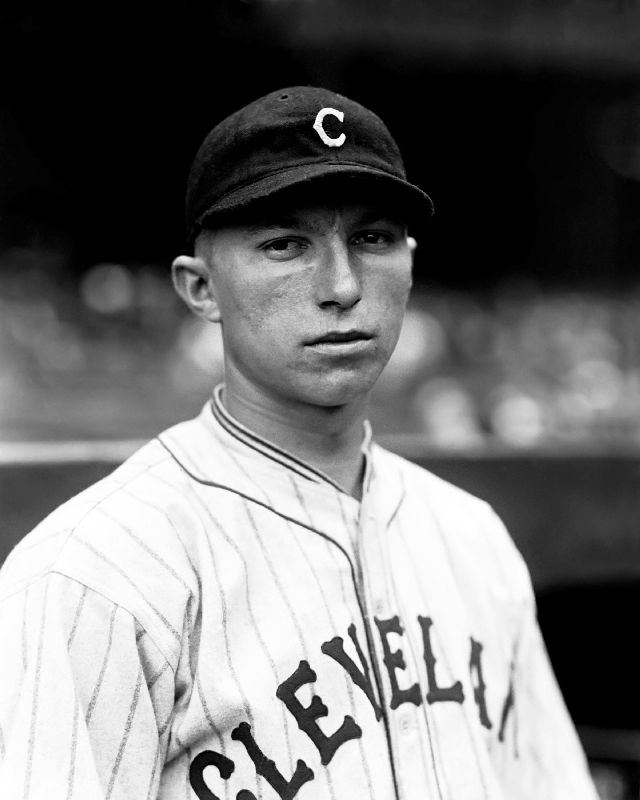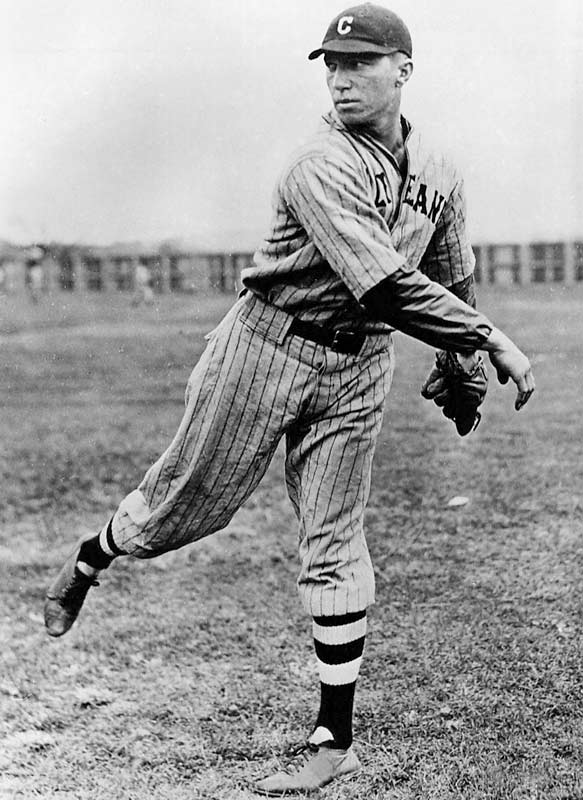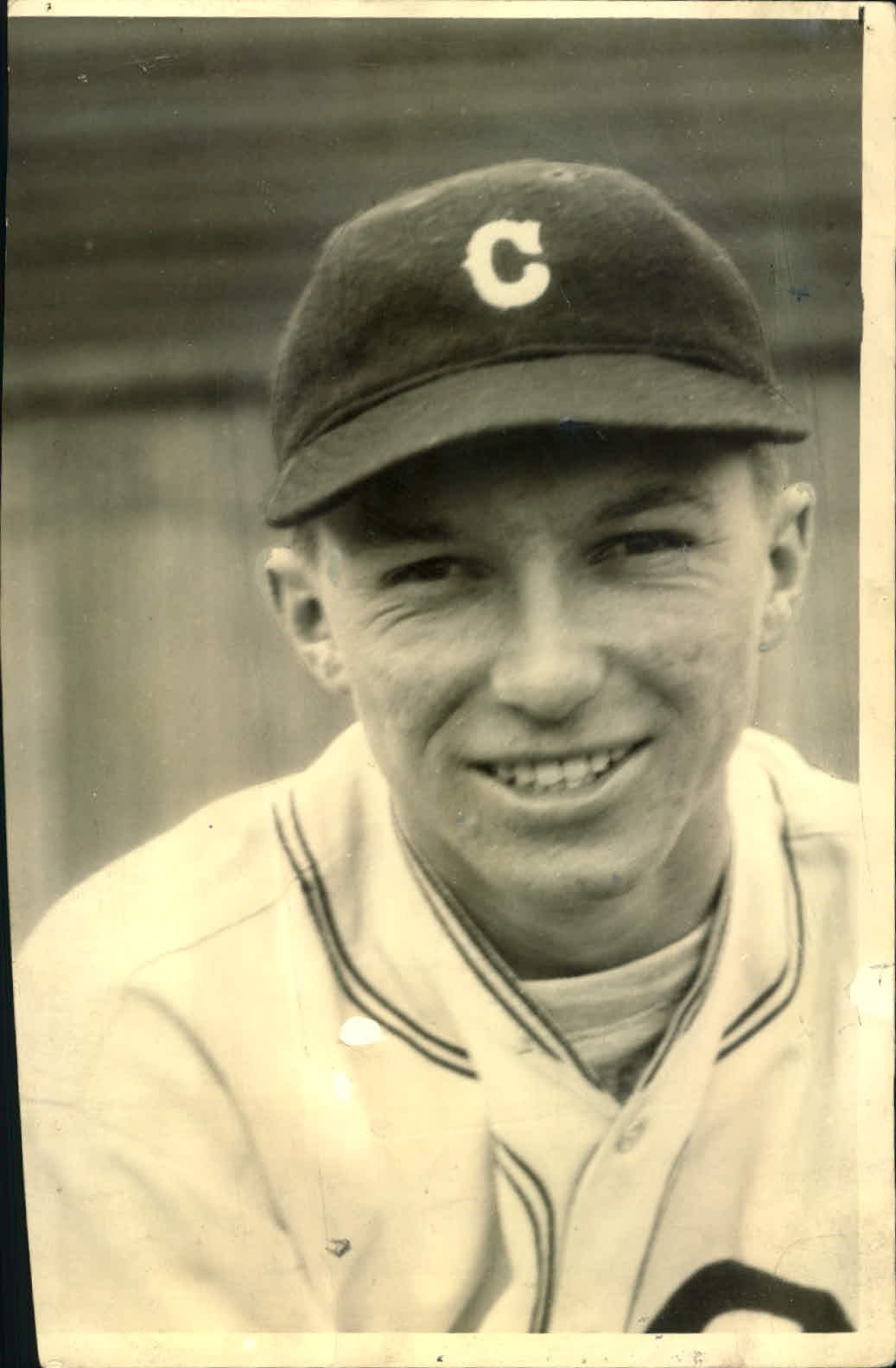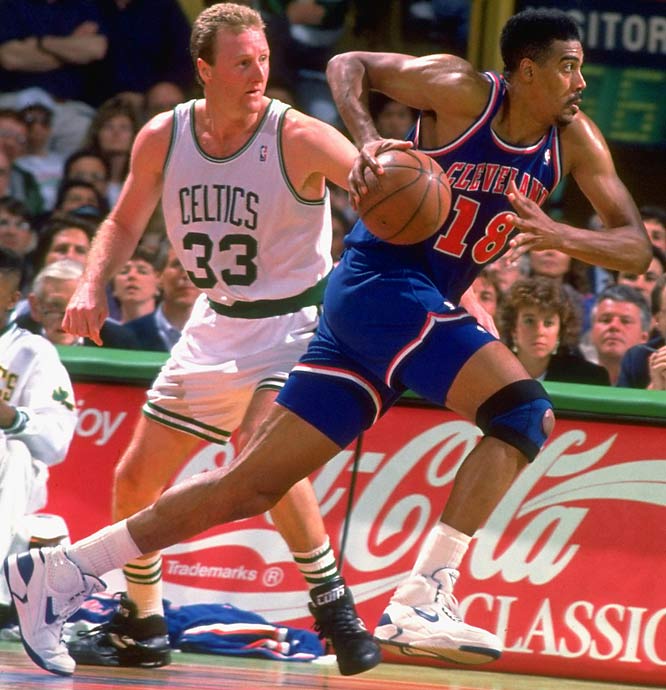 General
General  General Archive
General Archive  Top Cleveland Sports Figures, By the Numbers - #18
Top Cleveland Sports Figures, By the Numbers - #18
 This is one installment in a team effort by The Cleveland Fan, highlighting the top local sports figures by jersey number. Please weigh in with your thoughts on the Boards. And as David Letterman would say, “For entertainment purposes only; please, no wagering.”
This is one installment in a team effort by The Cleveland Fan, highlighting the top local sports figures by jersey number. Please weigh in with your thoughts on the Boards. And as David Letterman would say, “For entertainment purposes only; please, no wagering.”
At number 18, we have another digit that’s been retired by the Cleveland Indians. Starting pitcher Mel Harder wore #18 for (coincidentally) 18 of his 20 seasons with the Indians, having worn #49 for his first season+ with the Tribe. Harder pitched for the Indians from 1928 through 1947, and in his 20 years with the Tribe he never participated in a postseason contest. He broke in with the club after the 1920 World Series victory, and left just one season before the Indians were next world champs in 1948. Along the way, Harder would win 223 games and post a 3.80 ERA in 3426 1/3 career innings pitched, appear in four consecutive all-star games from 1934-1937 and become a Cleveland sports legend. The 20 seasons with the club make Harder the longest-tenured Cleveland Indian in history, and even after he retired as a player Harder remained with the organization as pitching coach. After a one-season stint as their 1B coach, Harder served as the Indians pitching coach from 1949-1963, so if you’re doing the math along with me you’ll see that Harder was a part of the Indians organization for a quarter of a century.
Melvin Leroy “Chief” Harder was born on October 15, 1909 in Beemer, Nebraska. He signed with the Indians straight of his Omaha high school, and made his big league debut as an 18 year old on April 24, 1928. Harder threw 3 2/3 innings of hitless relief, walking one and striking out a pair in a 6-2 road loss to the St. Louis Browns. A few weeks later, Harder was appearing in his third game as a professional against the Philadelphia Athletics and threw the pitch that ended up being Ty Cobb’s last career home run. Harder’s rookie season was somewhat rocky, as he was tagged with a 6.61 ERA in 49 IP, mostly out of the bullpen. He made just one start in his 23 appearances that season, and spent most of the 1929 season in the minor leagues. But Harder would be called up to the Indians in 1930, and he’d remain in the big leagues for the rest of his long and distinguished career. One of Harder’s more memorable feats was serving as the bookend for Cleveland Municipal Stadium. Harder started the first game in the stadium, dropping a close 1-0 decision to Lefty Grove and the Philadelphia Athletics on July 31, 1932. Harder was the hard-luck loser, throwing 8 innings and allowing just one run on 5 hits while walking 2 and striking out 7. There were 80,142 fans in attendance that day on the shores of Lake Erie, setting a new record for attendance at a professional baseball game. Harder would then throw the last pitch in Municipal Stadium history after the final game in 1993, a game I was lucky enough to attend along with my dad.
The one blight on an otherwise superlative career for Harder came during the 1940 season, when Harder was a veteran team leader under manager Ossie Vitt. Vitt was a tough manager, hard on and demanding of his players. He would frequently lambast them to the assembled members of the media, and was even hard on superstar Bob Feller. Feller pitched the only opening day no-hitter in baseball history that season, and was in the midst of a season in which he would lead the league in strikeouts, ERA, complete games, shutouts, innings pitched, WHIP and make the all-star team. Oh, and he was 21 years old at the time. Still, this wasn’t enough for Vitt, who was heard remarking on how he couldn’t be expected to win a pennant with Feller as his ace. After he yanked Harder off the mound and publicly told him to start pitching better to earn his salary, the veterans on the team had enough. Led by their spokesman Harder, eleven players went into to Indians owner Alva Bradley’s office in mid-June to tell Bradley that the Indians had the talent to win the AL pennant that year, but not with Vitt as their manager. They were sick of his attitude, sick of his arrogance, and sick of being run down to members of the press. Bradley said he would consider their concerns and asked that they not be made public, but word of the meeting leaked to the press.
 Fans and media lambasted the Indians players, suggesting that they simply weren’t tough enough to play under a real manager like Vitt. They were nicknamed the “Cleveland Crybabies,” and taunted around the league. The Indians were battling the Tigers for the pennant that year, and there were some particularly ugly incidents in (surprise!) Detroit when the Indians traveled northwest to play the Tigers. Detroit fans threw tomatoes at the Indians when their train arrived in Detroit, and then the future Nobel Laureates went on to throw baby food, bottles and rubber nipples onto the field and at the players during the games. Bradley felt that he couldn’t fire Vitt during the season after news of the meeting leaked, as he’d be seen as weak and kowtowing to his employees, so Vitt held on. The Indians still managed to go 61-44 the rest of the season, but Feller lost a crucial start to the Tigers (despite allowing just 3 hits) in Cleveland on the last weekend of the season, and the Tigers ended up winning the pennant by one game ahead of the 89-65 Indians. The performance was more in spite of Vitt than because of him, and some players later reported that they came up with their own set of signals to use in games, bypassing the unpopular manager on the field. Vitt was fired after that season, and never managed again. Harder went out on a limb to defend himself and his teammates, and he paid for it with the subsequent media backlash. But he did what he felt was right, and was ultimately vindicated when Vitt wasn’t retained at the end of the season. An interesting tidbit on the field from that 1940 season; Joe DiMaggio struck out just 30 times in 508 at bats in 1940. Three of those strikeouts came against Harder in a single game. DiMaggio hit just .180 off of Harder in his career.
Fans and media lambasted the Indians players, suggesting that they simply weren’t tough enough to play under a real manager like Vitt. They were nicknamed the “Cleveland Crybabies,” and taunted around the league. The Indians were battling the Tigers for the pennant that year, and there were some particularly ugly incidents in (surprise!) Detroit when the Indians traveled northwest to play the Tigers. Detroit fans threw tomatoes at the Indians when their train arrived in Detroit, and then the future Nobel Laureates went on to throw baby food, bottles and rubber nipples onto the field and at the players during the games. Bradley felt that he couldn’t fire Vitt during the season after news of the meeting leaked, as he’d be seen as weak and kowtowing to his employees, so Vitt held on. The Indians still managed to go 61-44 the rest of the season, but Feller lost a crucial start to the Tigers (despite allowing just 3 hits) in Cleveland on the last weekend of the season, and the Tigers ended up winning the pennant by one game ahead of the 89-65 Indians. The performance was more in spite of Vitt than because of him, and some players later reported that they came up with their own set of signals to use in games, bypassing the unpopular manager on the field. Vitt was fired after that season, and never managed again. Harder went out on a limb to defend himself and his teammates, and he paid for it with the subsequent media backlash. But he did what he felt was right, and was ultimately vindicated when Vitt wasn’t retained at the end of the season. An interesting tidbit on the field from that 1940 season; Joe DiMaggio struck out just 30 times in 508 at bats in 1940. Three of those strikeouts came against Harder in a single game. DiMaggio hit just .180 off of Harder in his career.
On the field, Harder’s signature pitch was his curveball. He was said to have one of the best curveballs in baseball, and between that and his sinking fastball he was able to pitch to contact and get hitters to beat the ball into the ground. He wasn’t a big strikeout guy, recording “just” 1161 in 3426 1/3 career IP. Harder suffered a shoulder injury in the middle of the 1936 season, and it took some of the zip off of his fastball for the rest of his career. Still, between his curveball and elite control, he was able to be an effective pitcher for 10+ seasons after that.
From 1934-1937 Harder was named to four-straight American League All-Star teams. He pitched 13 innings in those midsummer classics, and didn’t allow a single run. In fact, he still has the record for most innings pitched in all-star games without allowing any runs. Harder was the winning pitcher for the AL in the 1934 game in the Polo Grounds, throwing 5 shutout innings back when players actually, you know, tried hard in all-star games. The next year, the game was held at cavernous Municipal Stadium and Harder relieved starter Lefty Gomez to throw three innings of shutout relief in a 4-1 AL victory. After two more scoreless innings in 1936, Harder earned the save in the 1937 game, throwing the final three innings of an 8-3 AL victory.
The best stretch of Harder’s 20-year career was from 1932-1935, when the righty went a combined 72-53 with a 3.15 ERA. He struck out 357 and walked 269 in 1050 1/3 innings over that four-year period with a 1.29 WHIP. That adds up to an ERA+ of 145 over that timeframe, an impressive number to say the least. He started 127 games, and out of those 127 starts he completed 65 games. Of those 65 complete games, 13 were shutouts. In a feat that never would be duplicated in today’s game, Harder also made 41 relief appearances in that four-year period, recording 10 saves back when no one really cared about saves. It was an impressive run, one where Harder was as good as pretty much any pitcher in the American League.
 After Harder retired, he went on to a long career as a coach. He served as the Indians 1B coach for the 1948 season, giving him a front-row seat to the Indians last World Series championship. He became the pitching coach after that, and served as the mentor to some of the best pitching staffs in team history, if not league history. The 1954 Indians starting rotation boasted three 19-game winners, and that’s not even including Bob Feller’s 13-3 mark that season. Pitching prodigy Herb Score, who led the AL in strikeouts his first two seasons, credits Harder with improving his curveball. When Harder left the Indians coaching staff after the 1963 season, he was replaced by one of the pitchers he used to coach, Early Wynn. When asked about the man he was replacing, Wynn remarked that “Mel Harder made me into a pitcher.”
After Harder retired, he went on to a long career as a coach. He served as the Indians 1B coach for the 1948 season, giving him a front-row seat to the Indians last World Series championship. He became the pitching coach after that, and served as the mentor to some of the best pitching staffs in team history, if not league history. The 1954 Indians starting rotation boasted three 19-game winners, and that’s not even including Bob Feller’s 13-3 mark that season. Pitching prodigy Herb Score, who led the AL in strikeouts his first two seasons, credits Harder with improving his curveball. When Harder left the Indians coaching staff after the 1963 season, he was replaced by one of the pitchers he used to coach, Early Wynn. When asked about the man he was replacing, Wynn remarked that “Mel Harder made me into a pitcher.”
Harder moved to Arizona after he retired from coaching, but he just couldn’t get enough of the Cleveland area. He moved to Chardon in 1983, where he would eventually pass away in 2002. But before he passed away, Mel Harder made a movie…a movie that my youngest brother also happened to appear in. It sounds crazy, but in 1994 my youngest brother (who was 10 at the time) had a friend whose dad worked for Fox 8. His dad wanted to make a short movie called “Mel,” about an old former player who befriended some local kids to talk to them about baseball. Mel passed away in the movie, and my little brother played the pitcher who had Mel’s spirit, which he revealed to the other kids by throwing a baseball through the backstop at a local ball diamond. It sounds kind of weird when I think about it now, and I really do have to find a copy of the movie the next time I’m home at my parent’s house. I’ll also have to track down a VCR, which might be a more difficult than digging up the movie itself. Anyway, whether the movie ended up being good or not, I have an autographed Mel Harder baseball on my shelf to show for it, so the whole thing worked out pretty well for me.
 Other than Harder, the only Cleveland athlete worth mentioning is former Cleveland Cavalier John “Hot Rod” Williams. Hot Rod was the Cavs’ 2nd round pick out of Tulane in the 1985 NBA draft, and the 6’11” power forward spent 9 seasons in the blue and orange. His best season was in 1989-90, when he averaged 16.8 points, 8.1 rebounds and 2 blocks per game for a Cavaliers team that was bounced from the first round of the playoffs by the Philadelphia 76ers. Williams was part of one of the best frontcourts in Cavalier history, teaming up with Larry Nance and Brad Daugherty to dominate opposing teams in the paint. Williams was the highest paid player in baseketball during the 1990-91 season, signing a frontloaded contract extension that paid him a record $5 million for that year alone. Williams concluded his 13-year career with three seasons in Phoenix and one in Dallas, and ended up with career averages of 11 points, 6.8 rebounds and 1.6 blocks per game.
Other than Harder, the only Cleveland athlete worth mentioning is former Cleveland Cavalier John “Hot Rod” Williams. Hot Rod was the Cavs’ 2nd round pick out of Tulane in the 1985 NBA draft, and the 6’11” power forward spent 9 seasons in the blue and orange. His best season was in 1989-90, when he averaged 16.8 points, 8.1 rebounds and 2 blocks per game for a Cavaliers team that was bounced from the first round of the playoffs by the Philadelphia 76ers. Williams was part of one of the best frontcourts in Cavalier history, teaming up with Larry Nance and Brad Daugherty to dominate opposing teams in the paint. Williams was the highest paid player in baseketball during the 1990-91 season, signing a frontloaded contract extension that paid him a record $5 million for that year alone. Williams concluded his 13-year career with three seasons in Phoenix and one in Dallas, and ended up with career averages of 11 points, 6.8 rebounds and 1.6 blocks per game.
- NBA Announces 2013-2014 Schedule
- Browns Ink Sharknado
- Sharknado A No-Show For Rookie Camp
- Trent Richardson Out Until Training Camp
- Browns Sign Brandon Jackson
- Carrasco Suspended Eight Games
- Browns Add to Wide Receiver Depth with David Nelson
- Browns Need to Learn from Past Draft Mistakes
- Browns Release Chris Gocong and Usama Young
- Browns Missing on Grimes Disappointing, But Not The End
The TCF Forums
- Movies coming out
rebelwithoutaclue (Tuesday, January 21 2014 12:56 PM) - 2015 Recruiting
jclvd_23 (Tuesday, January 21 2014 12:38 PM) - The 2014 Offseason Thread
Larvell Blanks (Tuesday, January 21 2014 12:25 PM) - Official- Browns Coach Search/Rumors
Larvell Blanks (Tuesday, January 21 2014 11:53 AM) - Chris Grant's first 3 drafts
Kingpin74 (Tuesday, January 21 2014 10:13 AM) - Mike Brown
YahooFanChicago (Monday, January 20 2014 11:15 PM) - 2014 Hoops Hockey Hijinx
jpd1224 (Monday, January 20 2014 4:44 PM) - 2014 Recruiting
jclvd_23 (Monday, January 20 2014 2:26 PM) - Wish List - #4 Pick
Hikohadon (Monday, January 20 2014 1:26 PM) - #1 overall pick Anthony Bennett
TouchEmAllTime (Sunday, January 19 2014 1:28 PM)



